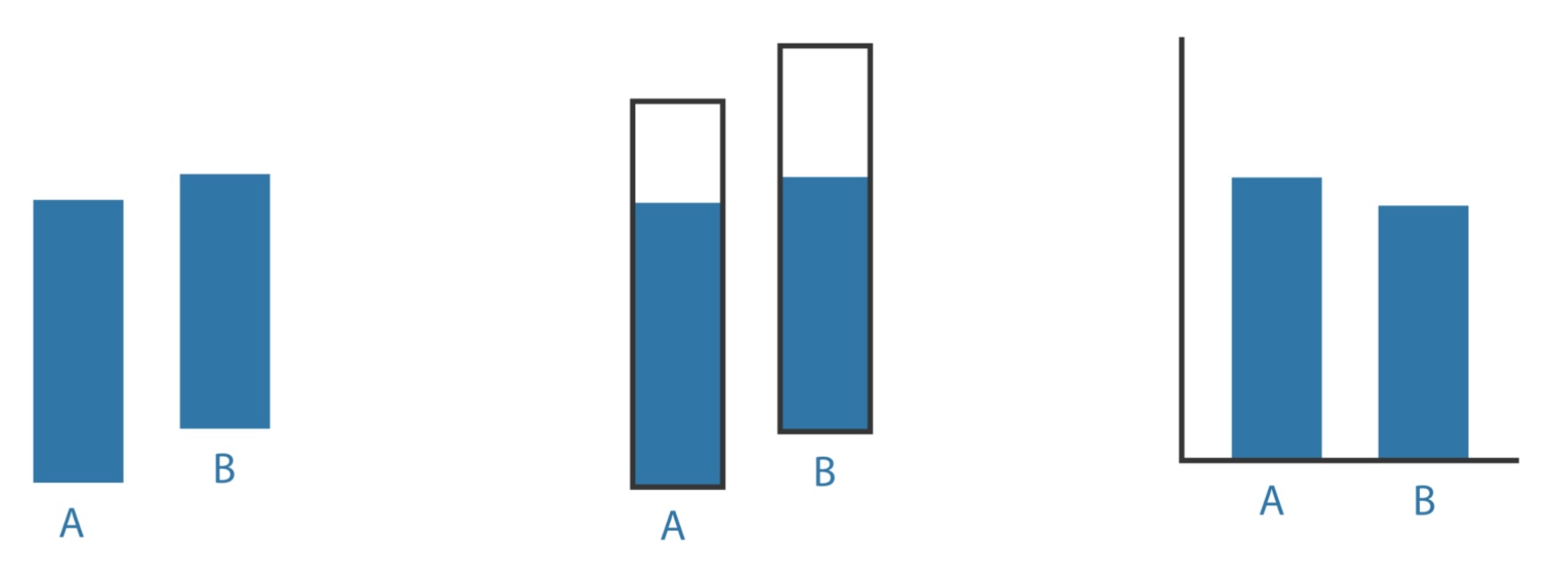Visualization for Machine Learning
## Perception for Design 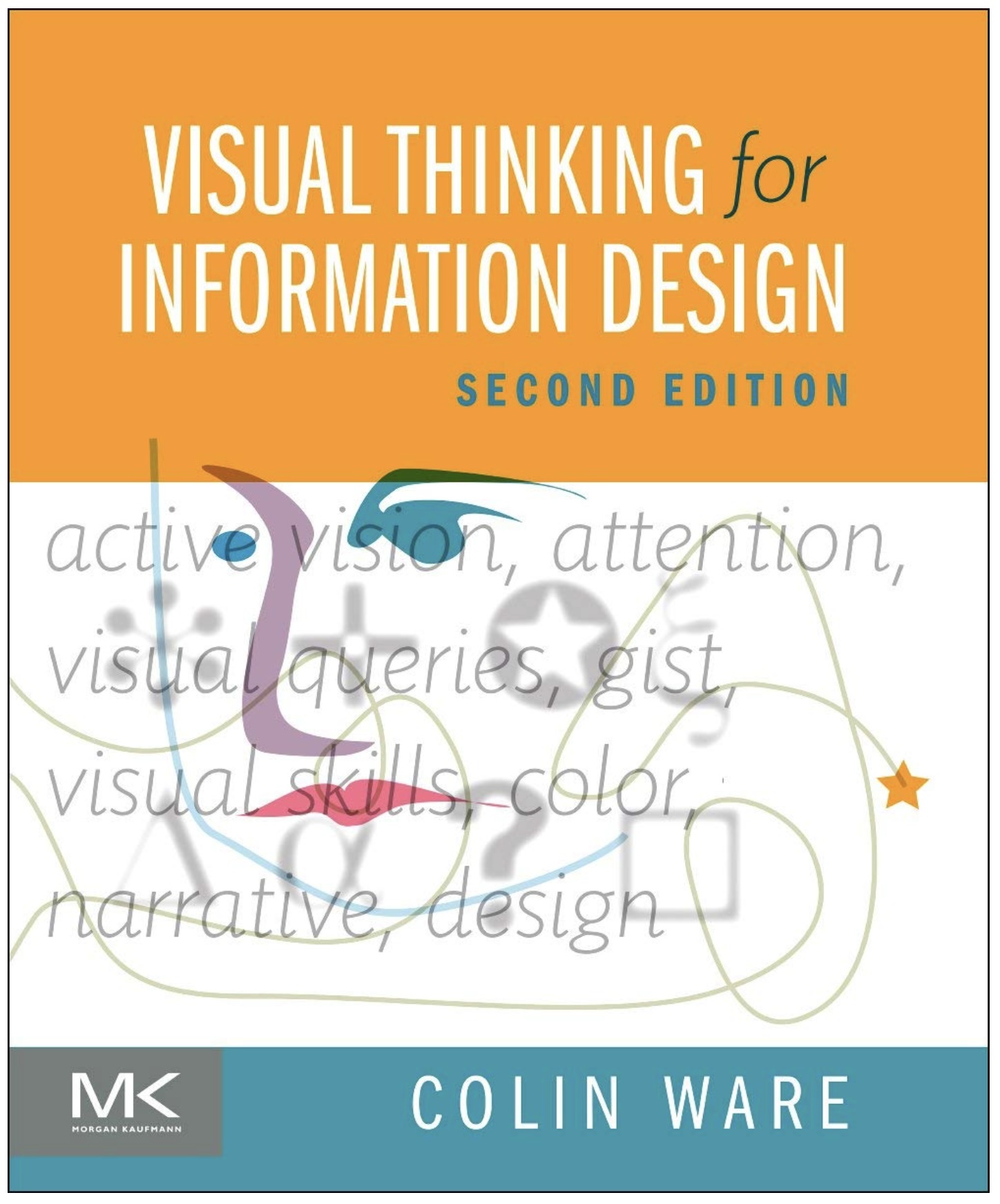 ## Brain "Visual thinking consists of a series of acts of attention, driving eye movements, and tuning our pattern finding circuits", Colin Aware 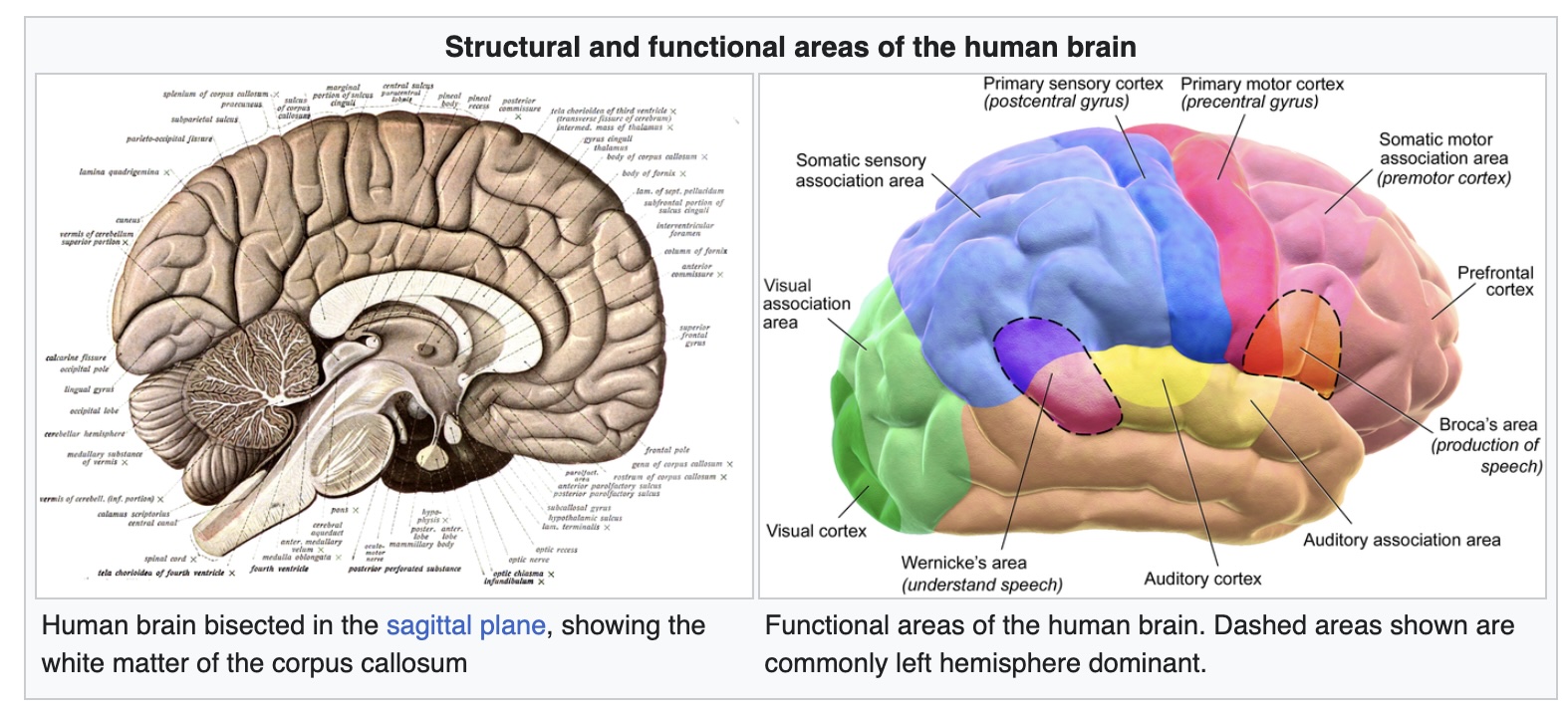 ::: footer Image from Wikipedia: [link](https://en.wikipedia.org/wiki/Human_brain) ::: ## The Vision Brain "Visual thinking consists of a series of acts of attention, driving eye movements, and tuning our pattern finding circuits", Colin Aware 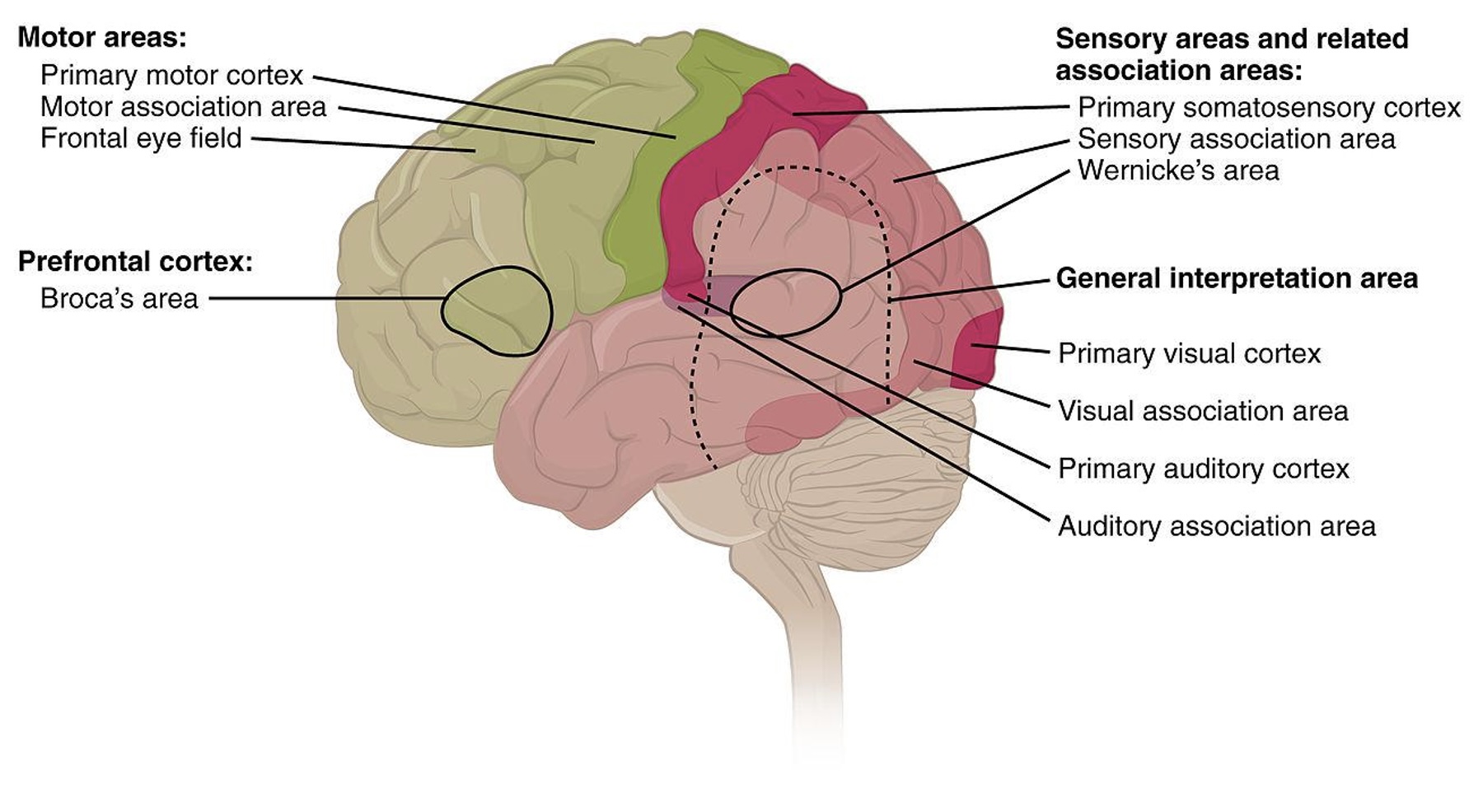 ::: footer Image from Wikipedia: [link](https://en.wikipedia.org/wiki/Human_brain) ::: ## The Act of Perception * Botton-Up and Top-Down Processes 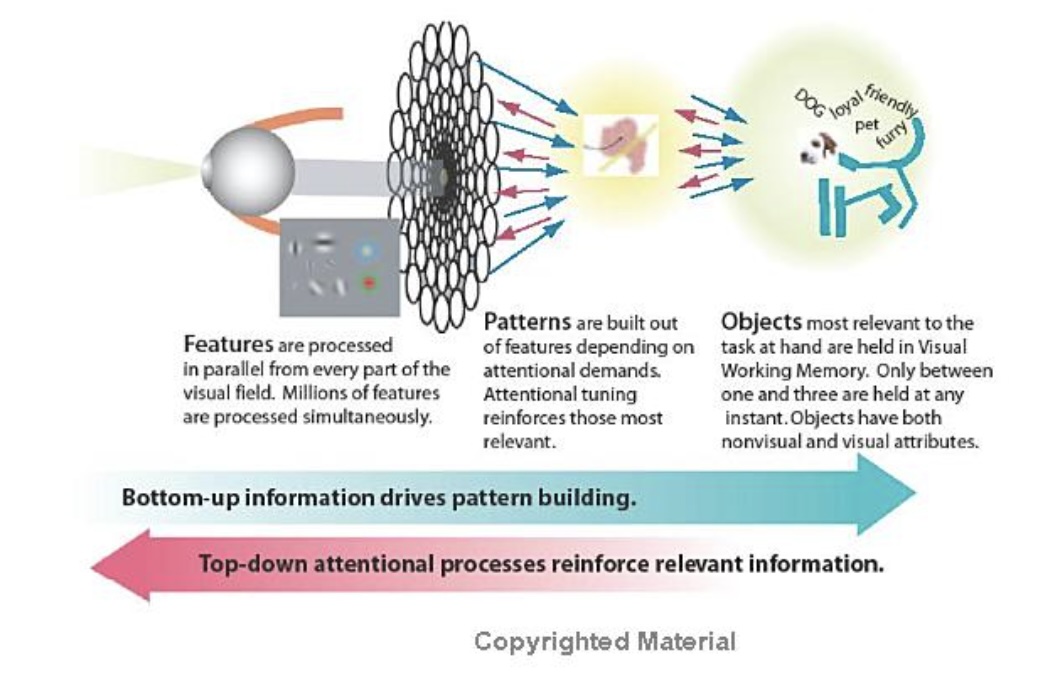 ::: footer Material from Colin Ware's book ::: ## The Act of Perception * Bottom-up: information is sucessively selected and filtered into patterns as it passes a sequence of stages. Ware outlines three stages: 1) optical nerve to V1 Cortex; 2) use texture and colors to aggregate *patterns*; 3) visual objects are recognized in the *visual working memory*. 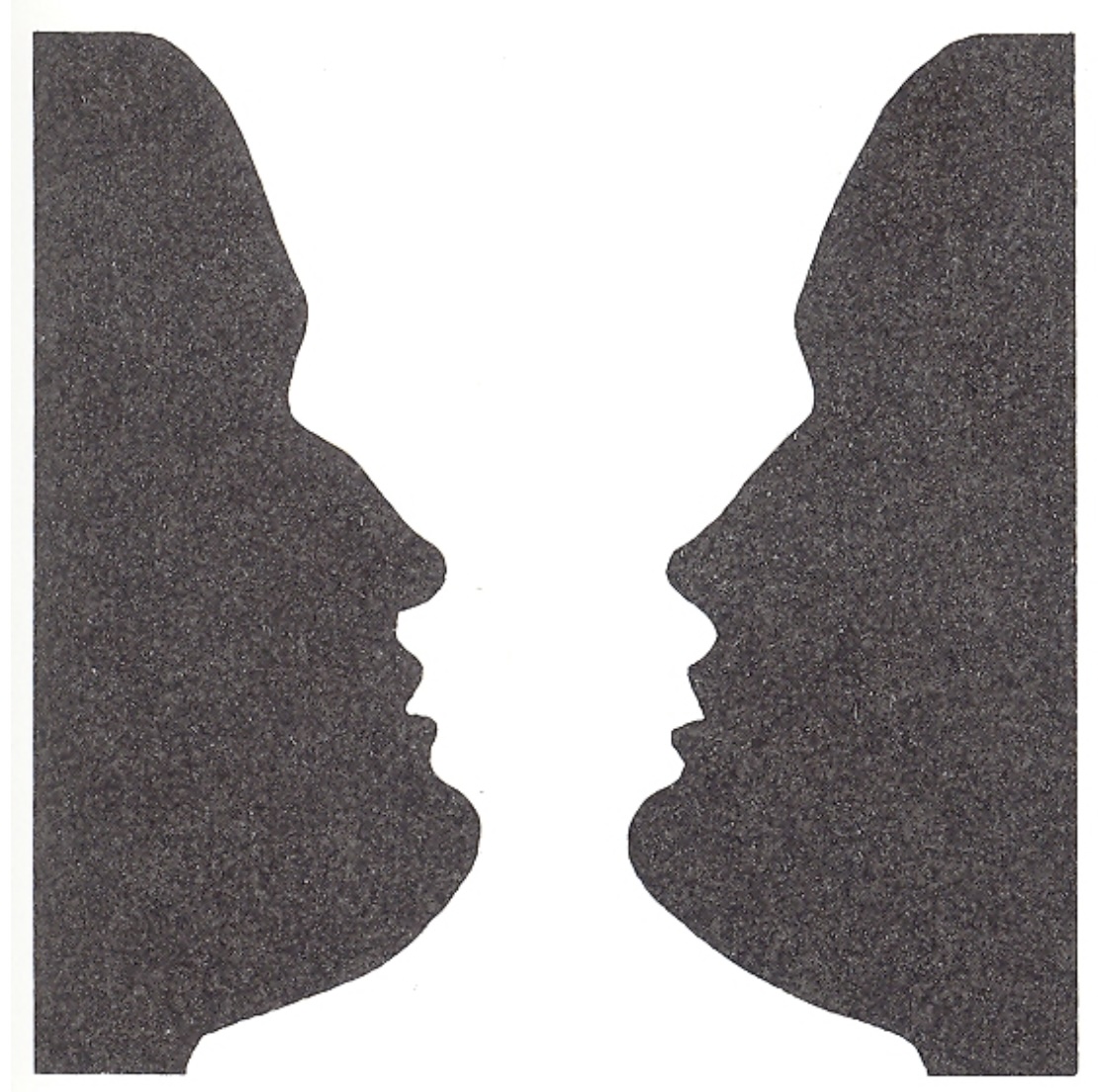 ::: footer Image from the book: "Eye and Brain: The Psychology of Seeing", Gregory ::: ## The Act of Perception * Top-Down: Every stage of bottom-up processing contains a corresponding top-down process. Ware describes the process as "attention". The dominant principle is that we only get the information that we need, when we need it. 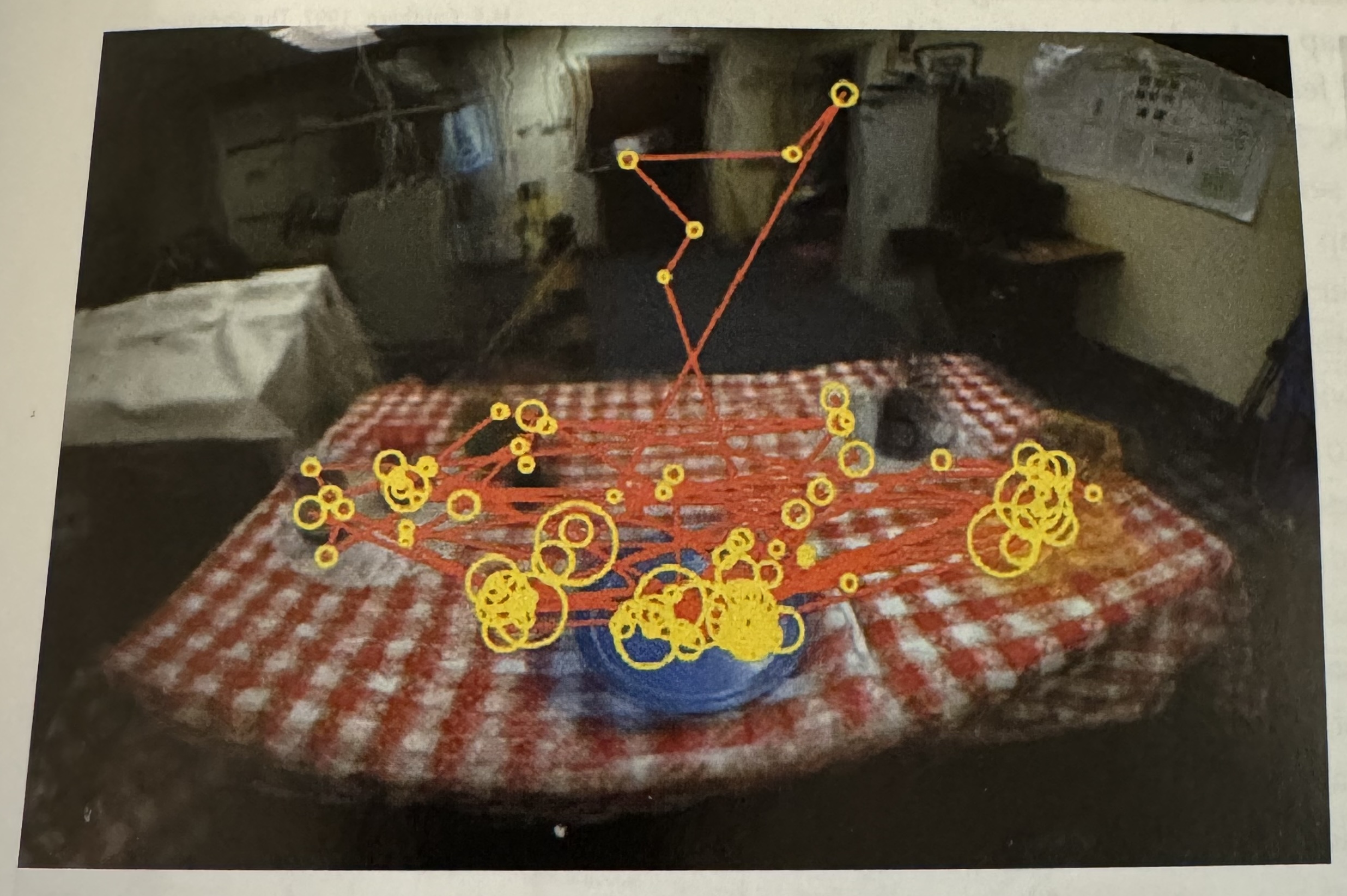 ::: footer Material from Colin Ware's book ::: ## The Implications for Design * "Just-in-time visual queries" (Ware) * "One way to look at the brain operates is a set of nested loops. Outer loops deal with generality while inner loops process detail." (Ware) 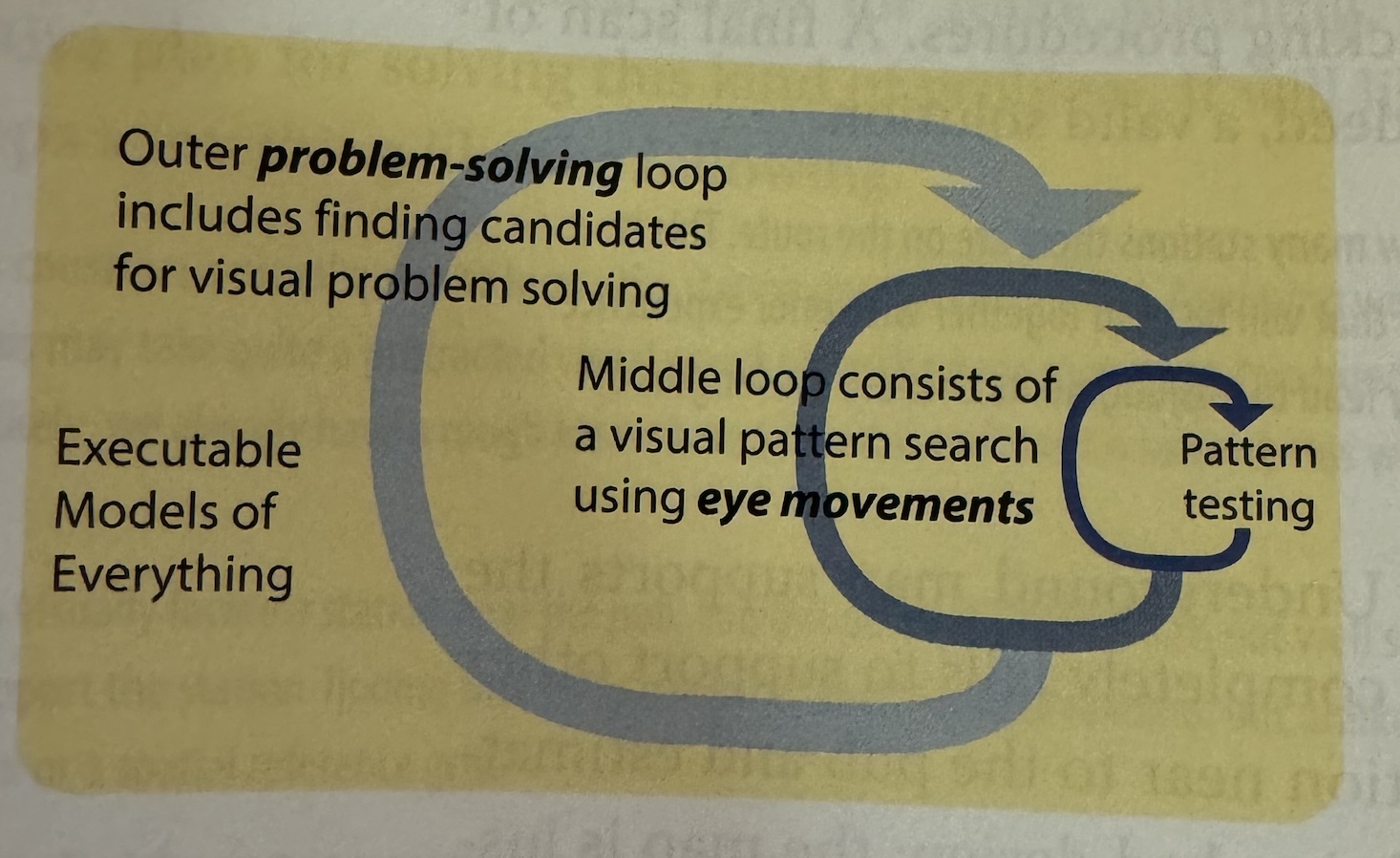 ::: footer Material from Colin Ware's book ::: ## Low-Level Feature Analysis * David Hubel and Torsten Wiesel won Nobel prize for this discovery. 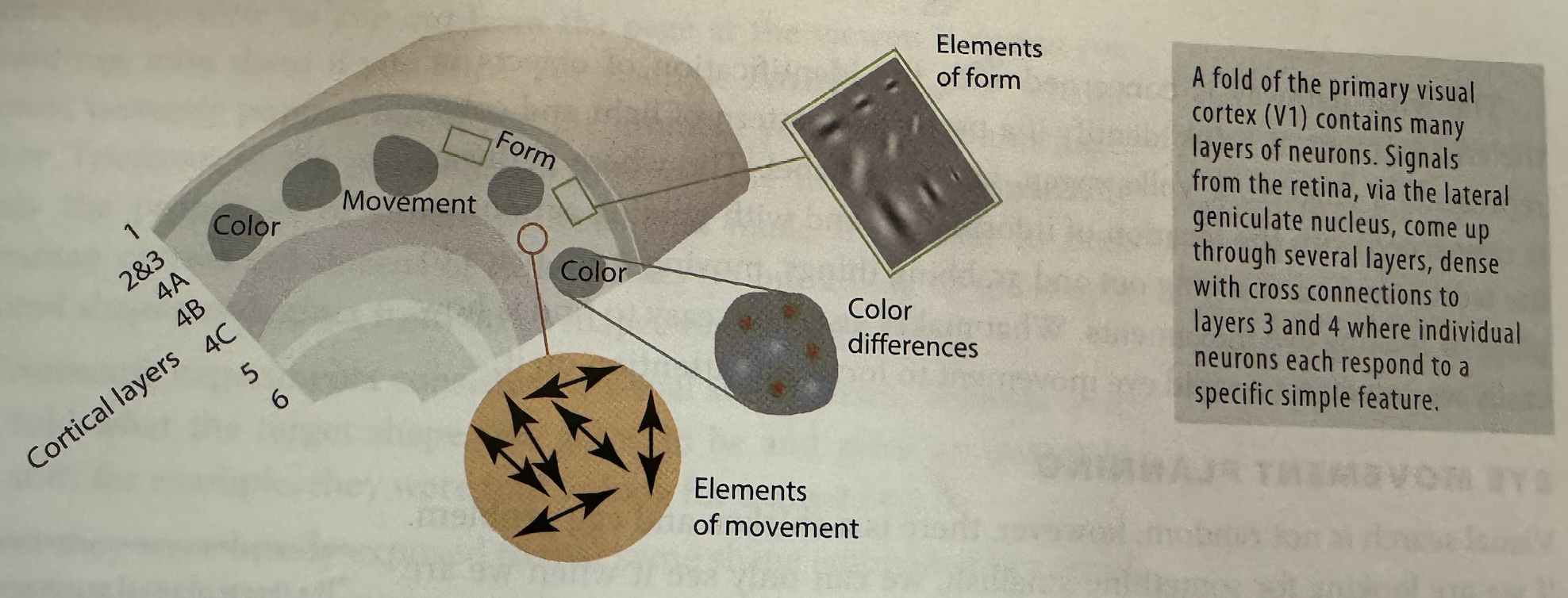 ::: footer Material from Colin Ware's book ::: ## What and Where Pathways * What: identification of objects in environment. * Where: location of objects and eye movement. 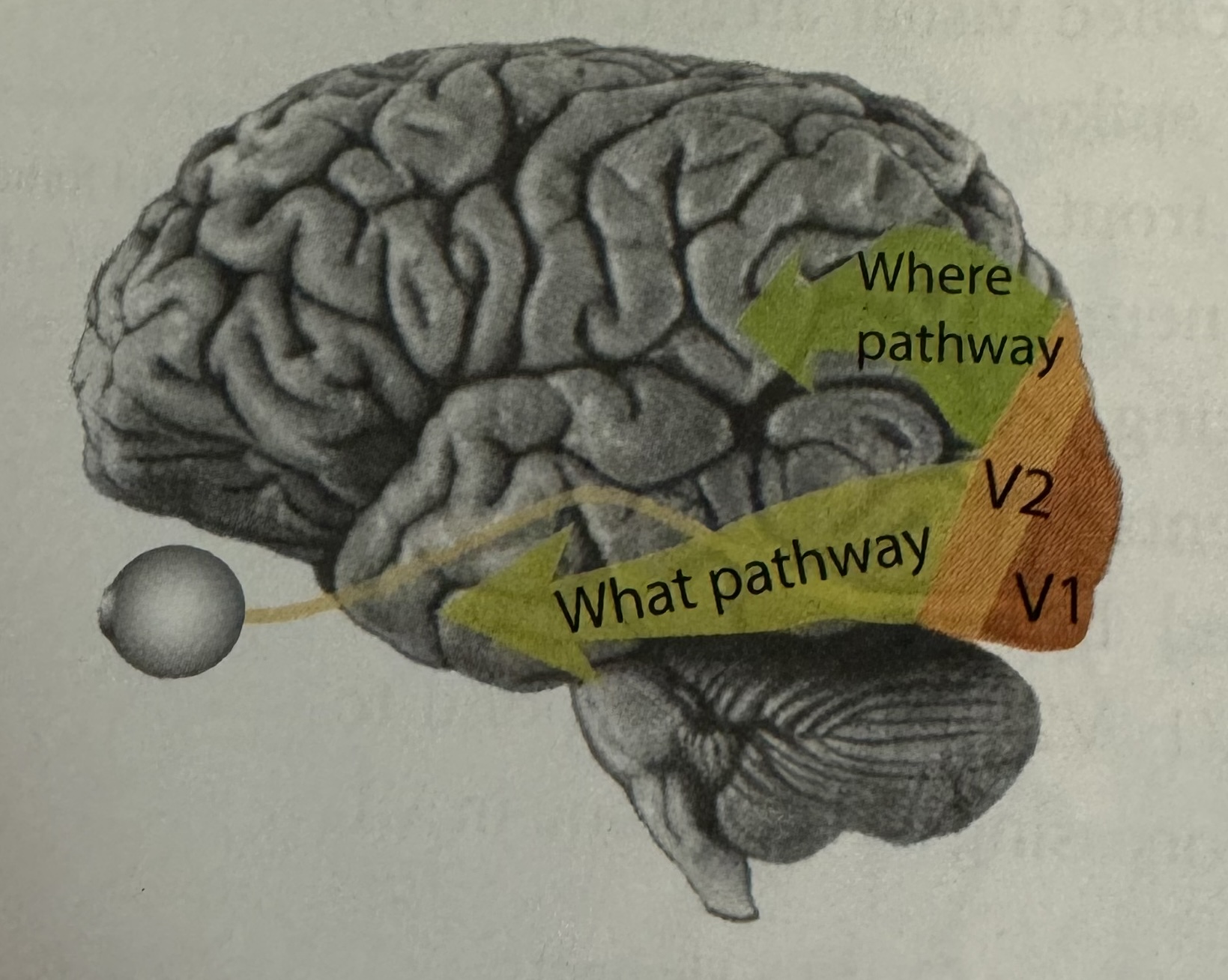 ::: footer Material from Colin Ware's book ::: ## What Stands Out (Popout) * Anne Triesman studied how to find patterns and shapes when surrounded by others. ::: columns ::: {.column width="50%"} 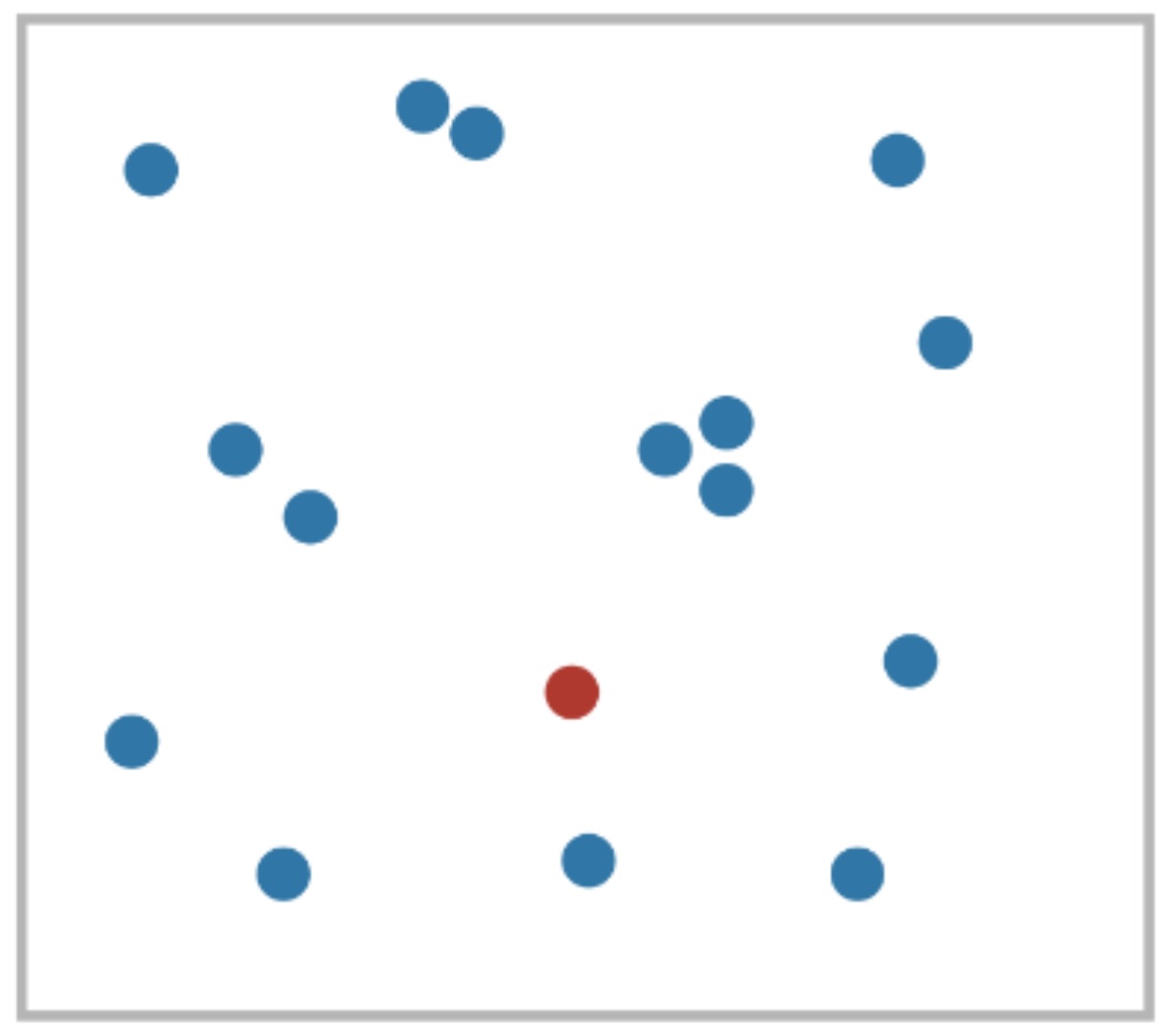 ::: ::: {.column width="50%"} 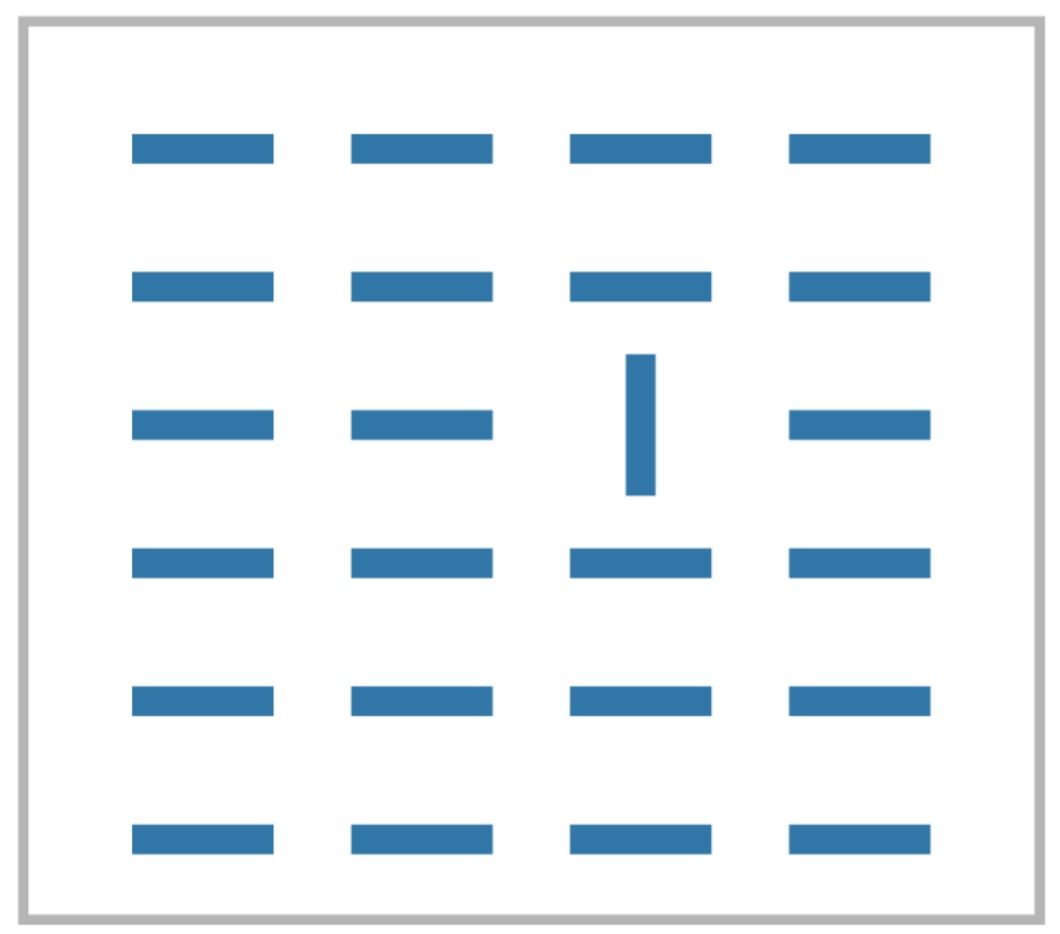 ::: ::: For some configurations the time *did not* depend on the number of distracters (pre-attentive). ::: footer Material from Colin Ware's book ::: ## What Stands Out (Popout) 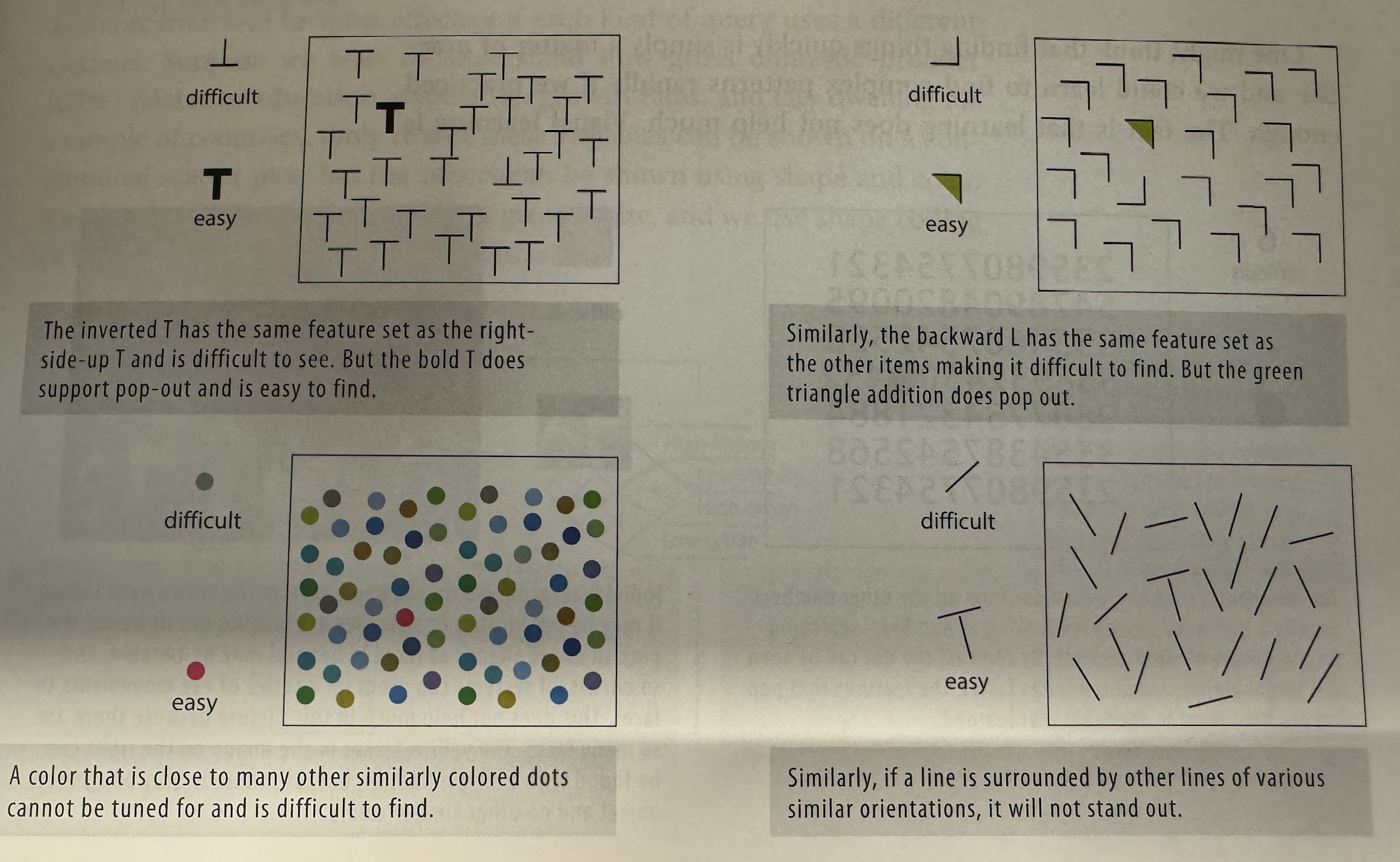 ::: footer Material from Colin Ware's book ::: ## The Gestalt Principles [link, see video](https://www.interaction-design.org/literature/topics/gestalt-principles) * Visualization is a two-way street: - We (the vis designer) bring something to the table. - The human (end user) brings their prior experience. * Design should take such prior experience into account! * What is prior experience? Gestalt laws. ::: footer Material from Matt Berger ::: ## Closure * We can complete incomplete shapes 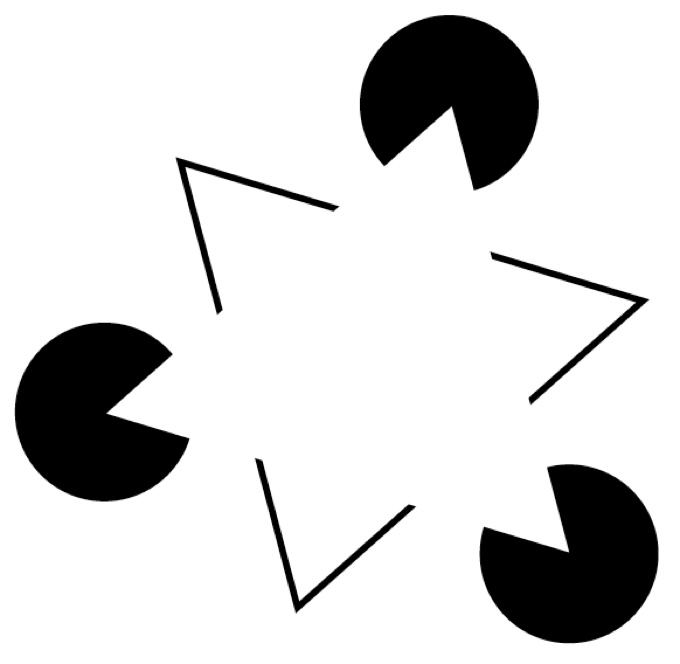 * Implications: visualizations can be unintentionally misleading! Conversely: sometimes only necessary to show sparse set of marks to convey trend (dot plot) ::: footer Material from Matt Berger ::: ## Similarity * Elements with the same visual properties considered to be grouped 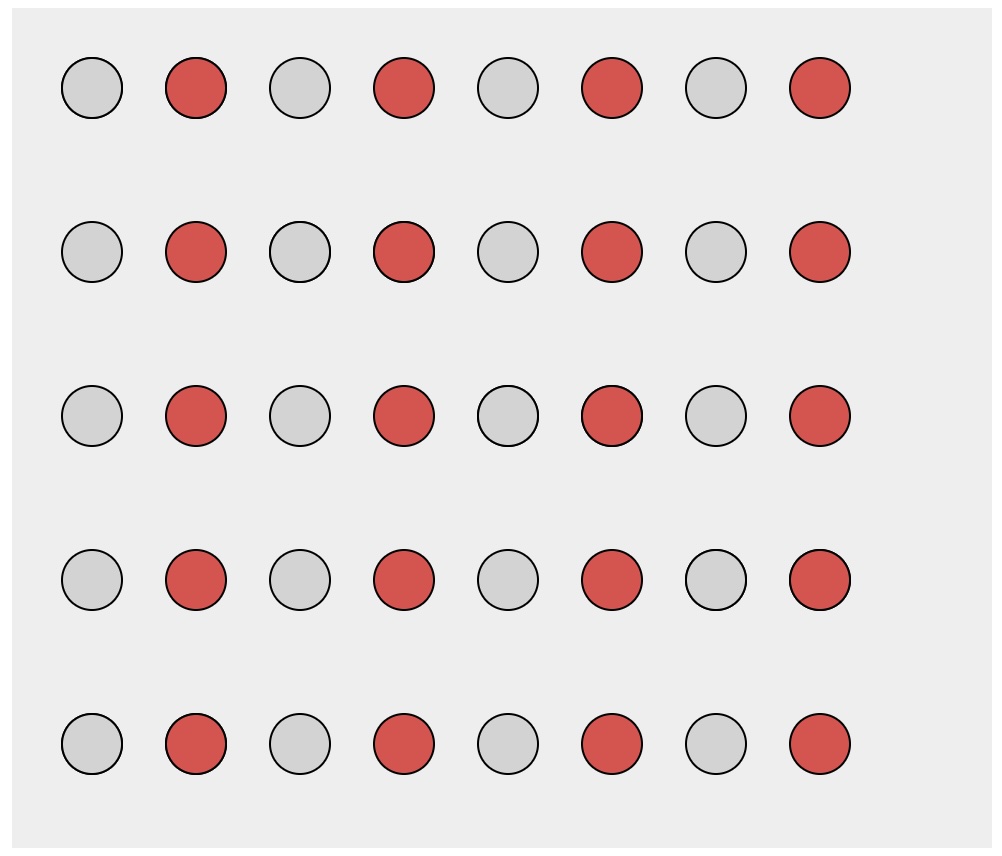 ::: footer Material from Matt Berger ::: ## Similarity * Elements with the same visual properties considered to be grouped 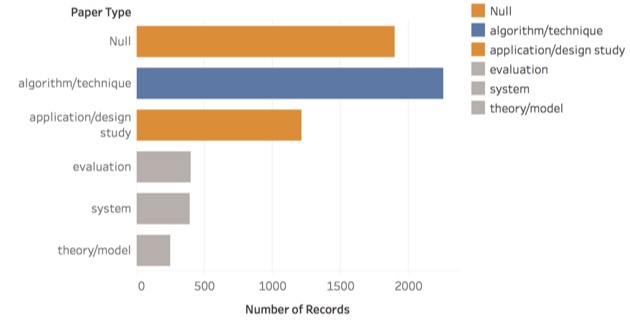 ::: footer Material from Enrico Bertini ::: ## Proximity * Elements that are of close spatial proximity are somehow grouped.  ::: footer Material from Matt Berger ::: ## Proximity * Elements that are of close spatial proximity are somehow grouped. 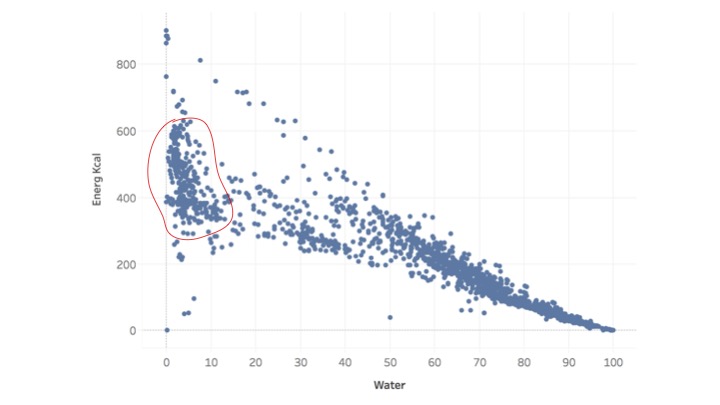 ::: footer Material from Enrico Bertini ::: ## Enclosure * Explicit visual encoding of enclosure also depicts grouping. 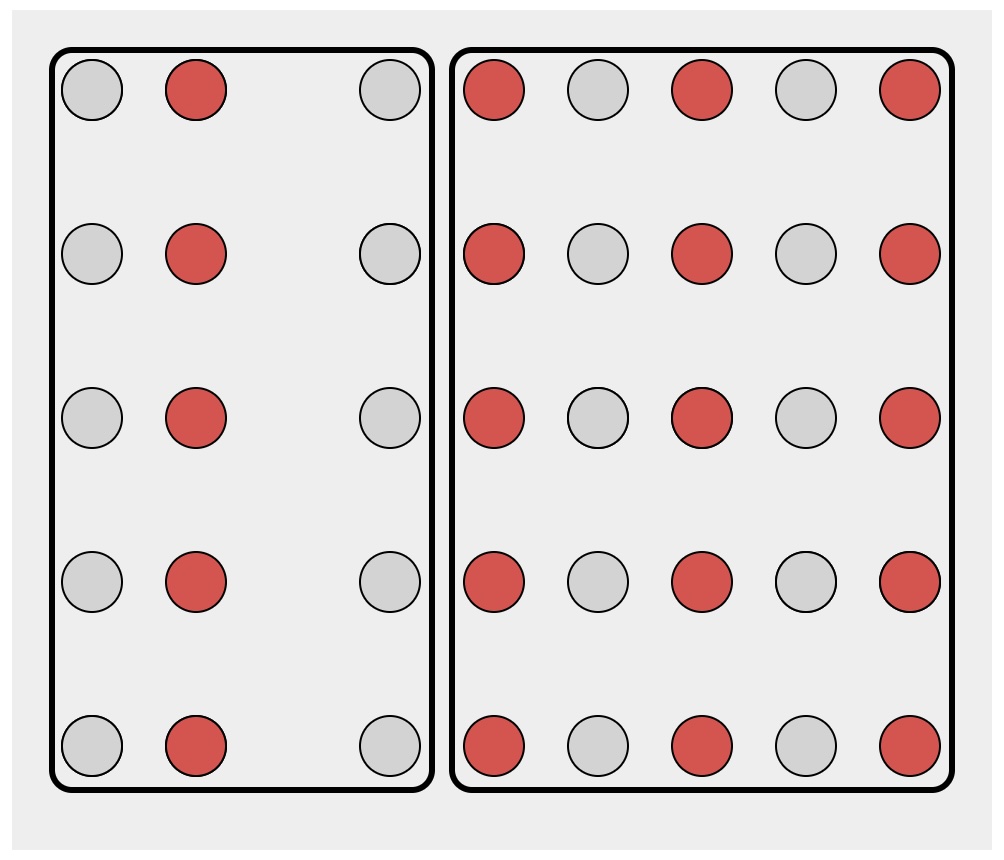 ::: footer Material from Matt Berger ::: ## Enclosure * Explicit visual encoding of enclosure also depicts grouping. 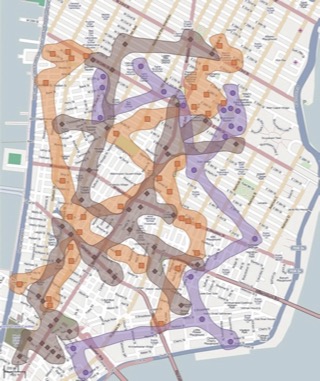 [Bubblesets video link](https://www.youtube.com/watch?v=P6CgBmIiXaE) ::: footer Material from Enrico Bertini ::: ## Connection * Objects connected together are perceived as a group. 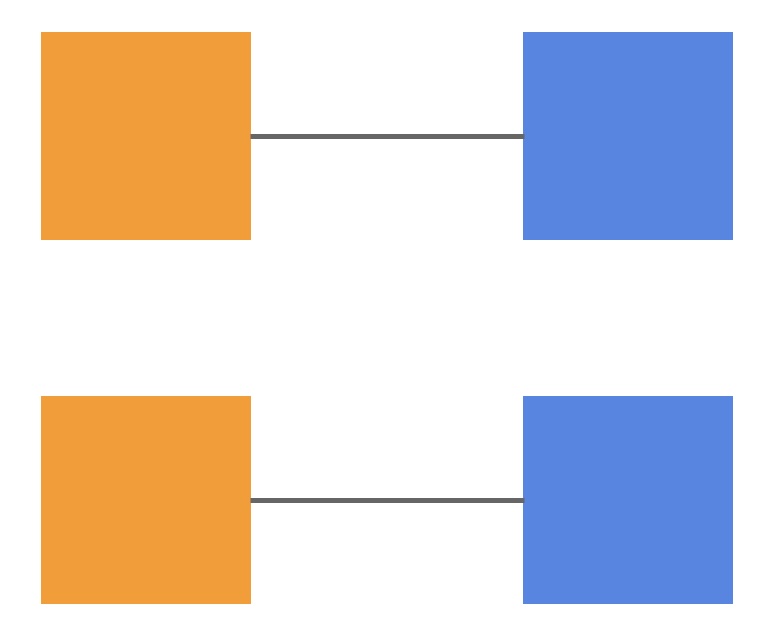 ::: footer Material from Enrico Bertini ::: ## Connection * Objects connected together are perceived as a group. 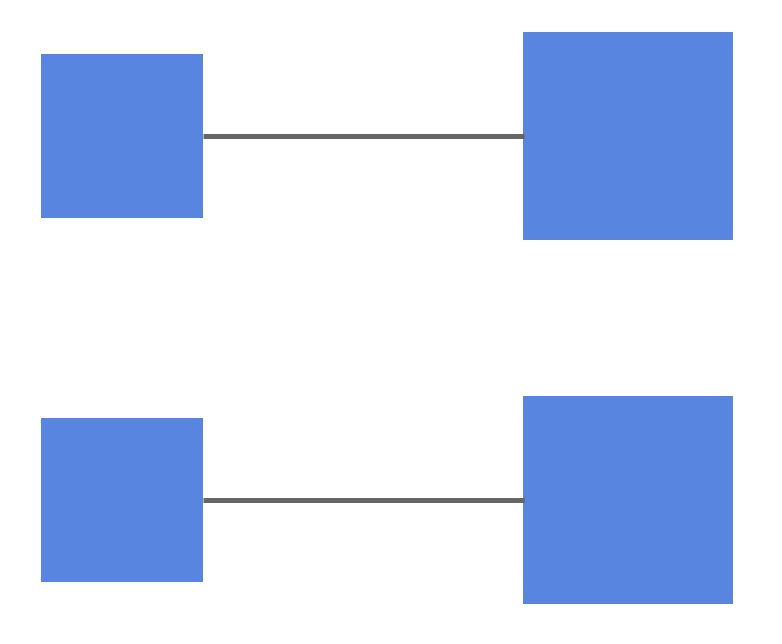 ::: footer Material from Enrico Bertini ::: ## Connection * Objects connected together are perceived as a group. 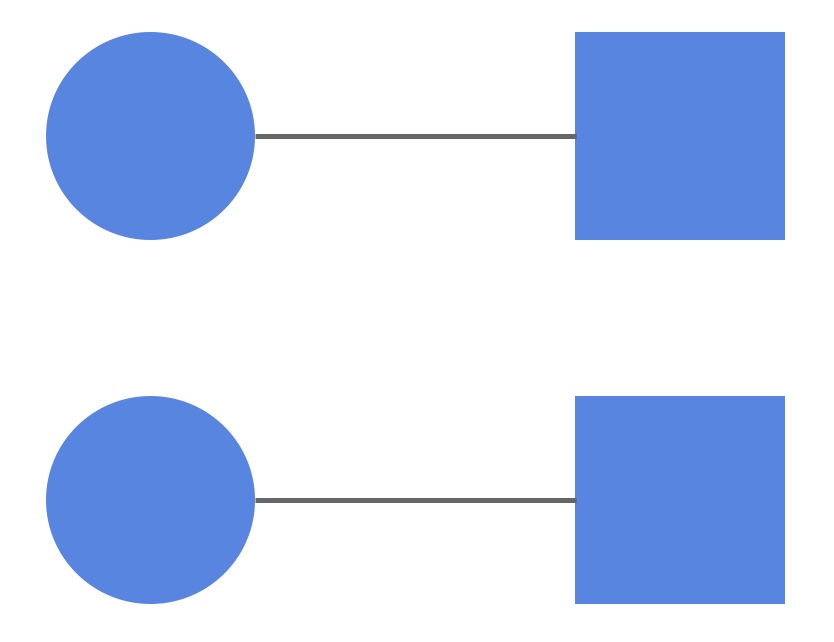 ::: footer Material from Enrico Bertini ::: ## Connection * Objects connected together are perceived as a group. 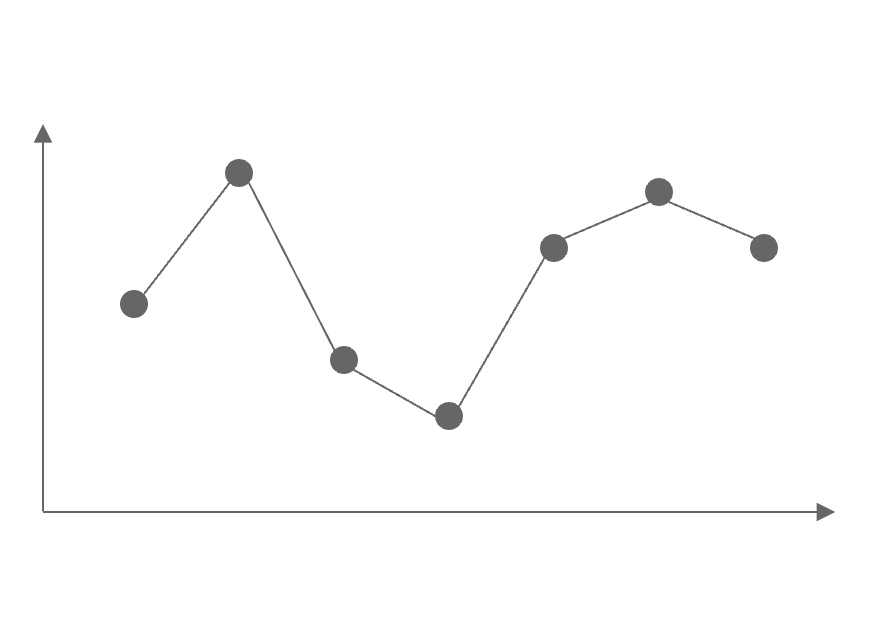 ::: footer Material from Enrico Bertini ::: ## Just Noticeable Difference (JND) * In psychophysics a just-noticeable difference or JND is the amount something must be changed in order for a difference to be noticeable, detectable at least half the time. * Stevens's power law: [link](https://en.wikipedia.org/wiki/Stevens%27s_power_law) 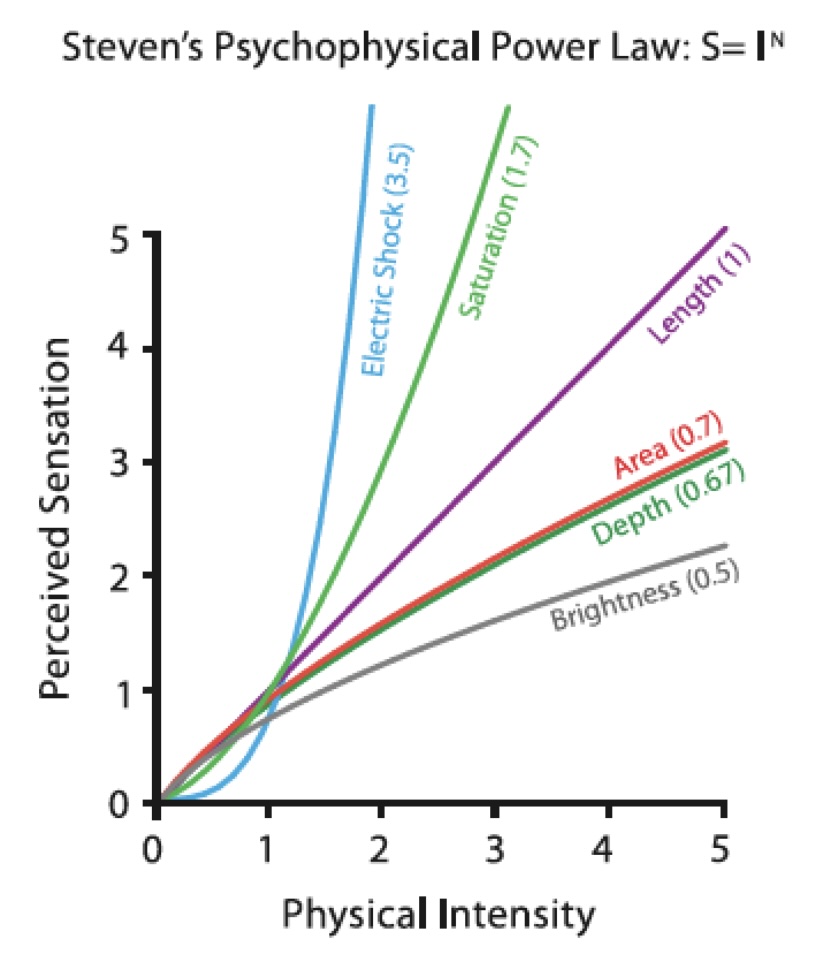 ::: footer Wikipedia: [link](https://en.wikipedia.org/wiki/Just-noticeable_difference) ::: ## Accuracy * How accurately a channel can express quantitative information ## Graphical Perception ::: columns ::: {.column width="50%"} 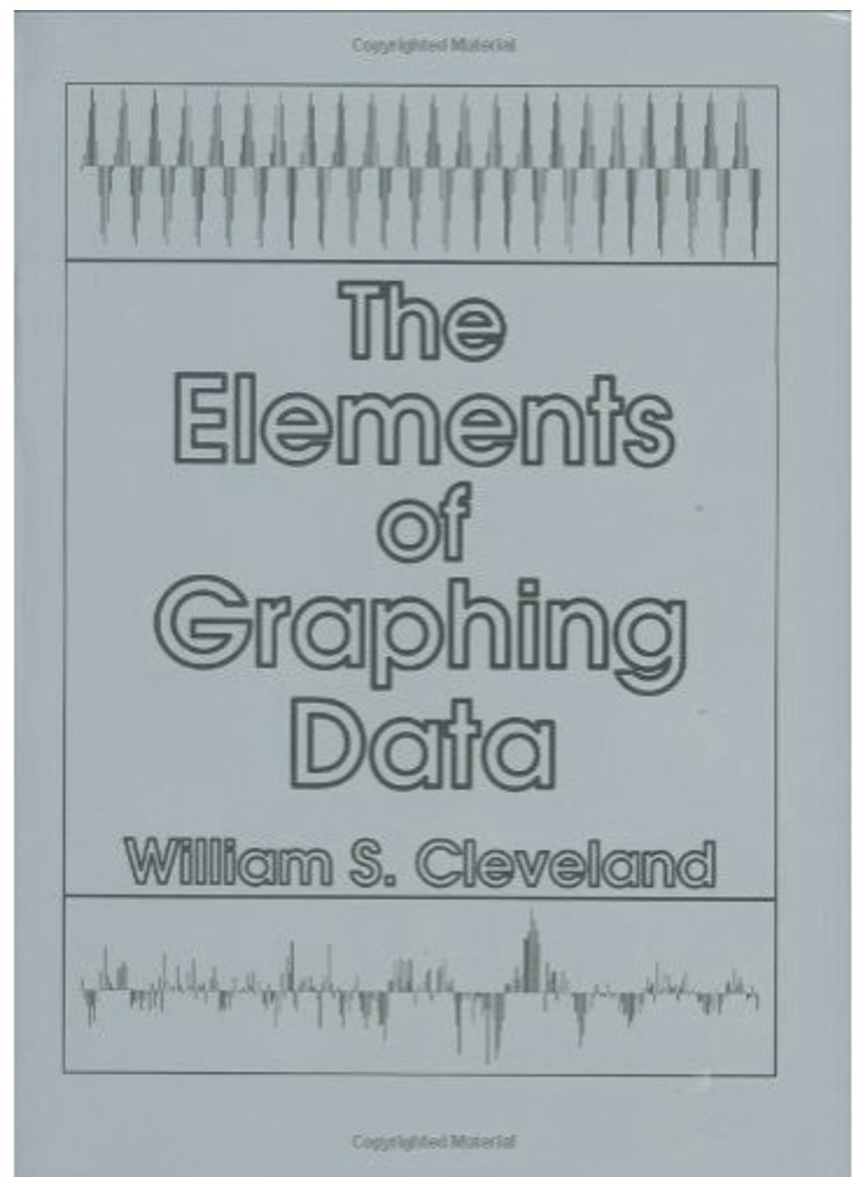 ::: ::: {.column width="50%"} 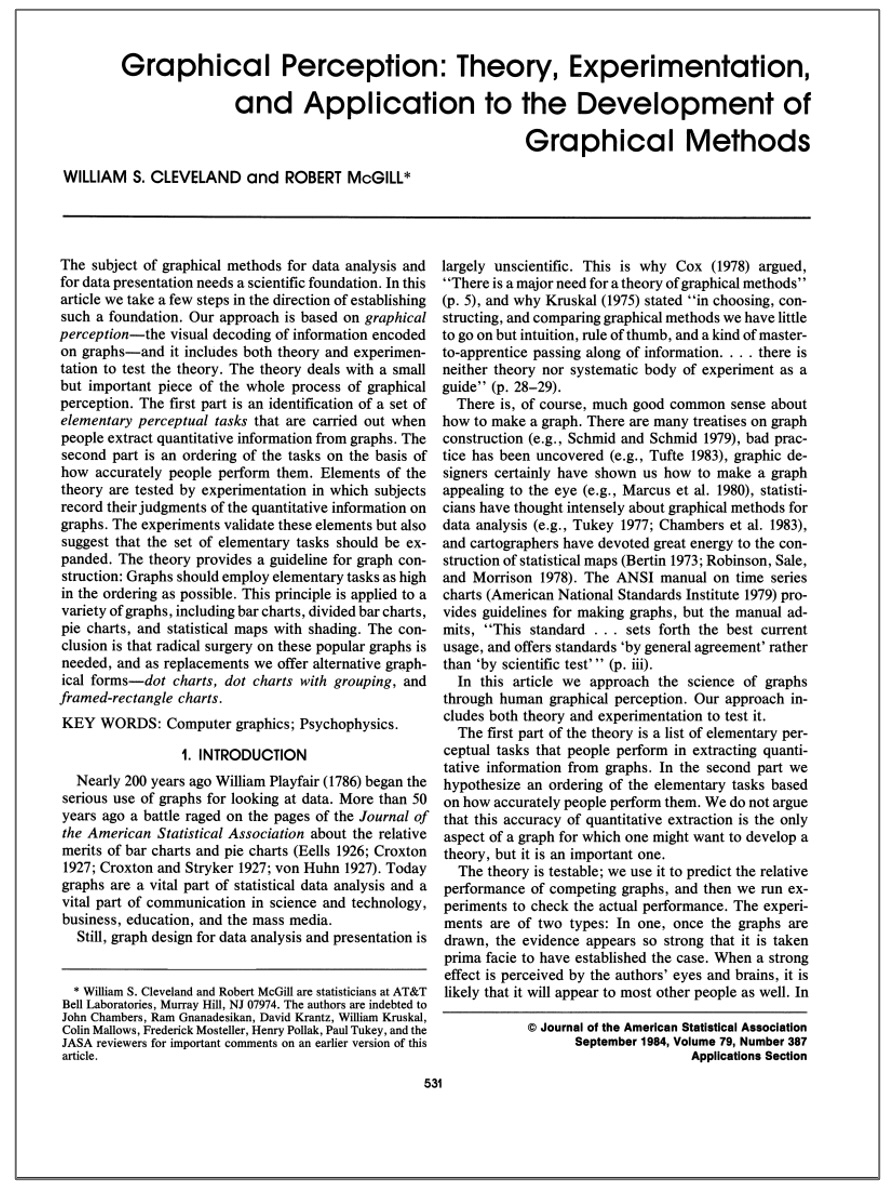 ::: ::: ::: footer Slides based on material from Prof. Enrico Bertini ::: ## Graphical Perception Experiment  ::: footer Slides based on material from Prof. Enrico Bertini ::: ## Graphical Perception Results  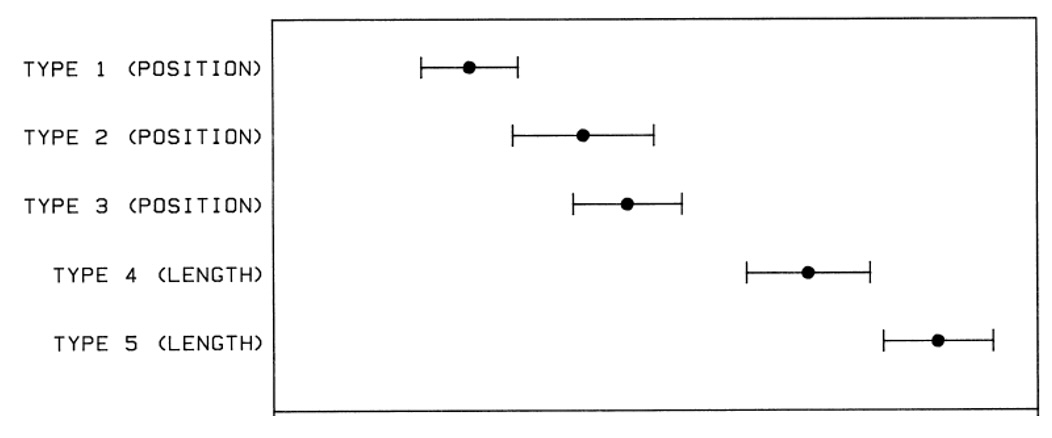 ::: footer Slides based on material from Prof. Enrico Bertini ::: ## Accuracy * Position > Length and Angle > Area * Prioritize high-rank channels (with reason) * Do not expect precise judgments from low-rank channels ::: footer Slides based on material from Prof. Enrico Bertini ::: ## Effectiveness Effect 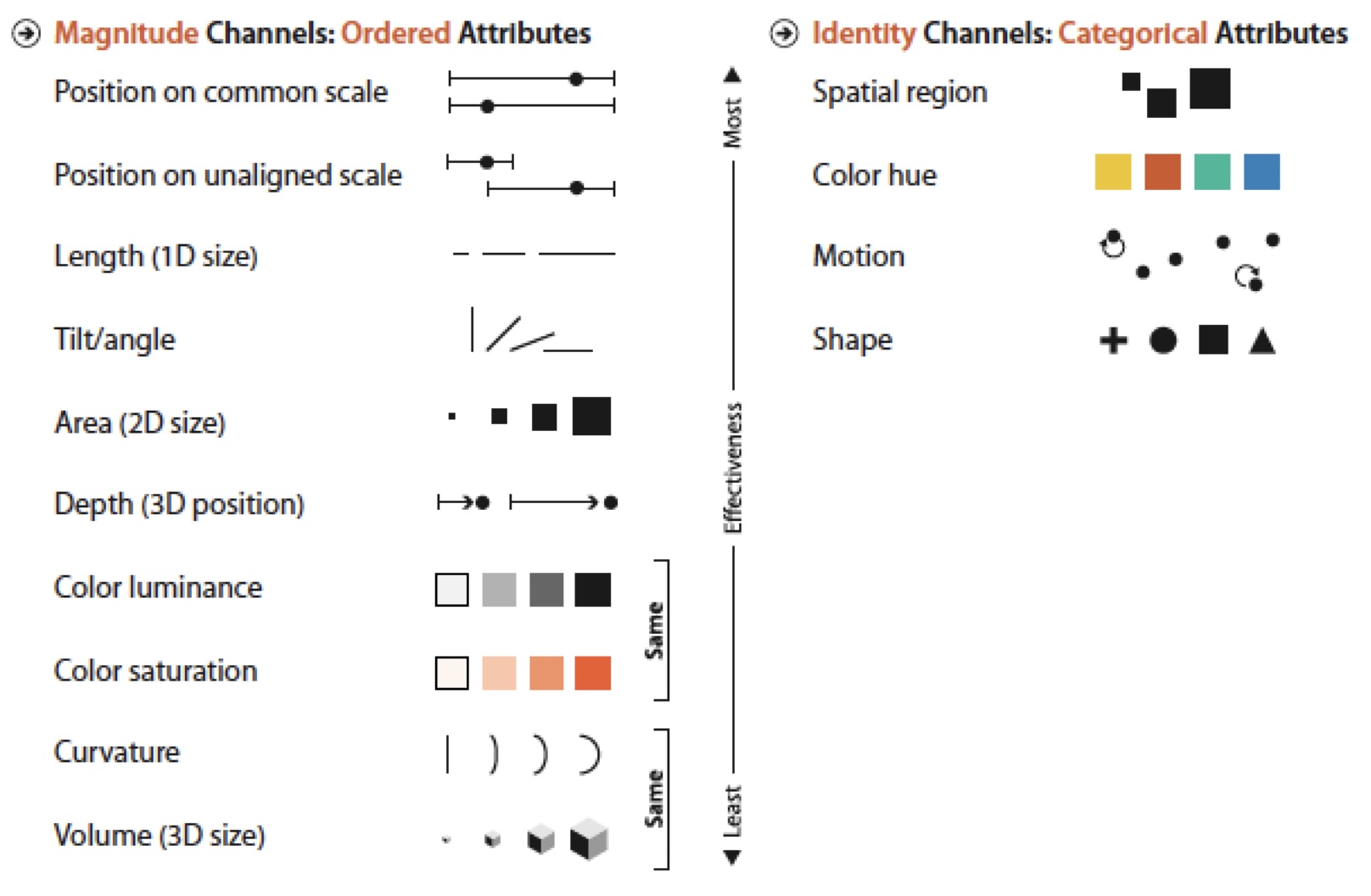 ## Discriminability * How many distinct values can be distinguished within a channel * It depends on: - Channel properties - Spatial arrangement - Size (resolution) - Cardinality * Warning: Do not overestimate the number of values viewers can perceive/discriminate ::: footer Slides based on material from Prof. Enrico Bertini ::: ## Discriminability * Many channels, in particular identity channels, can only support a limited number of discriminable levels. - Line width is one of the most limited with perhaps 3 levels. - Using more than 5 or 6 color hues is not recommended. - Similarly, using more than 5 or 6 symbol shapes can create difficulties. * If the number of levels that can be represented by a channel is smaller than the number of attribute levels then some form of meaningful aggregation is needed. ::: footer Material from [link](https://homepage.divms.uiowa.edu/~luke/classes/STAT4580/percep.html#discriminability) ::: ## Popout * Tasks performed in less than 200 to 250 milliseconds. * Faster than eyes movement initiation. * Suggest processing by parallel low-level visual system. ::: footer Slides based on material from Prof. Enrico Bertini ::: ## Popout  ::: footer Slides based on material from Prof. Enrico Bertini ::: ## Some features are not pre-attentive 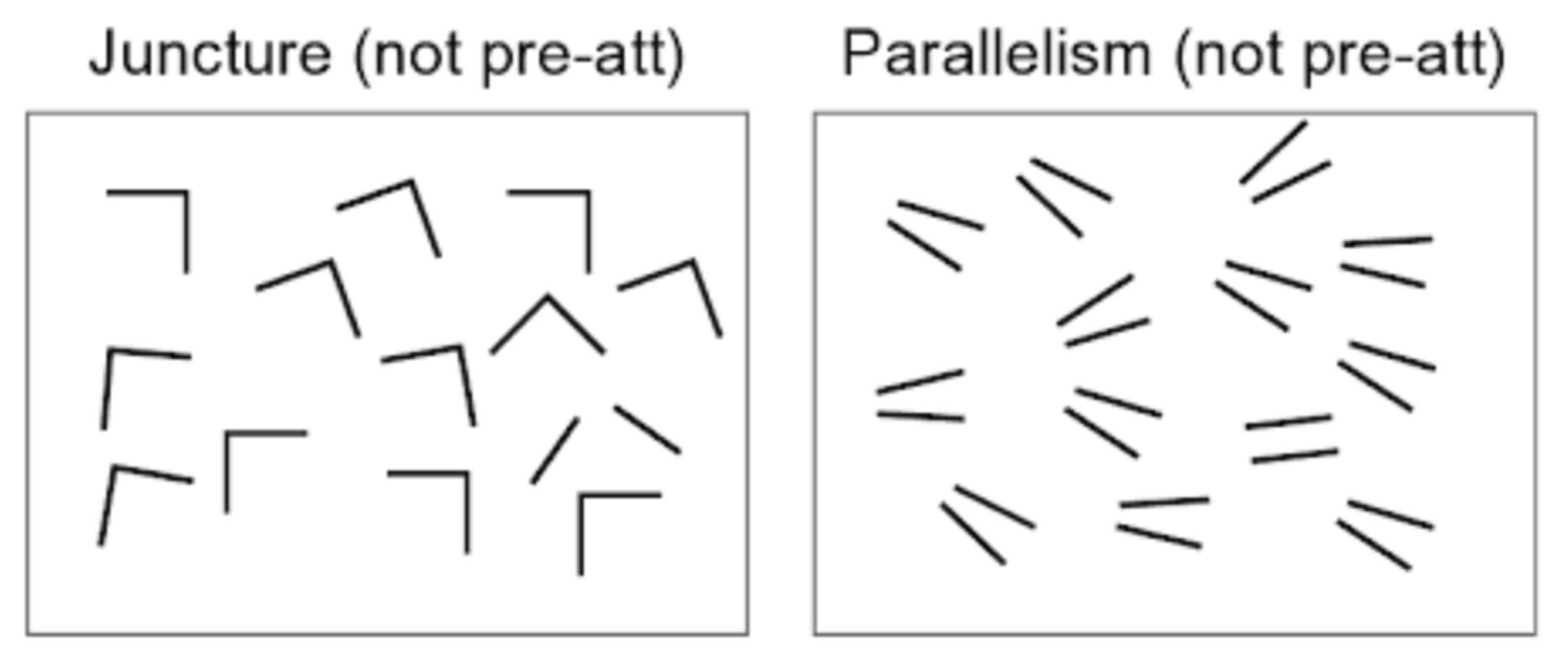 ::: footer Slides based on material from Prof. Enrico Bertini ::: ## Tasks requiring the use of multiple channels are (most of the time) not preattentive 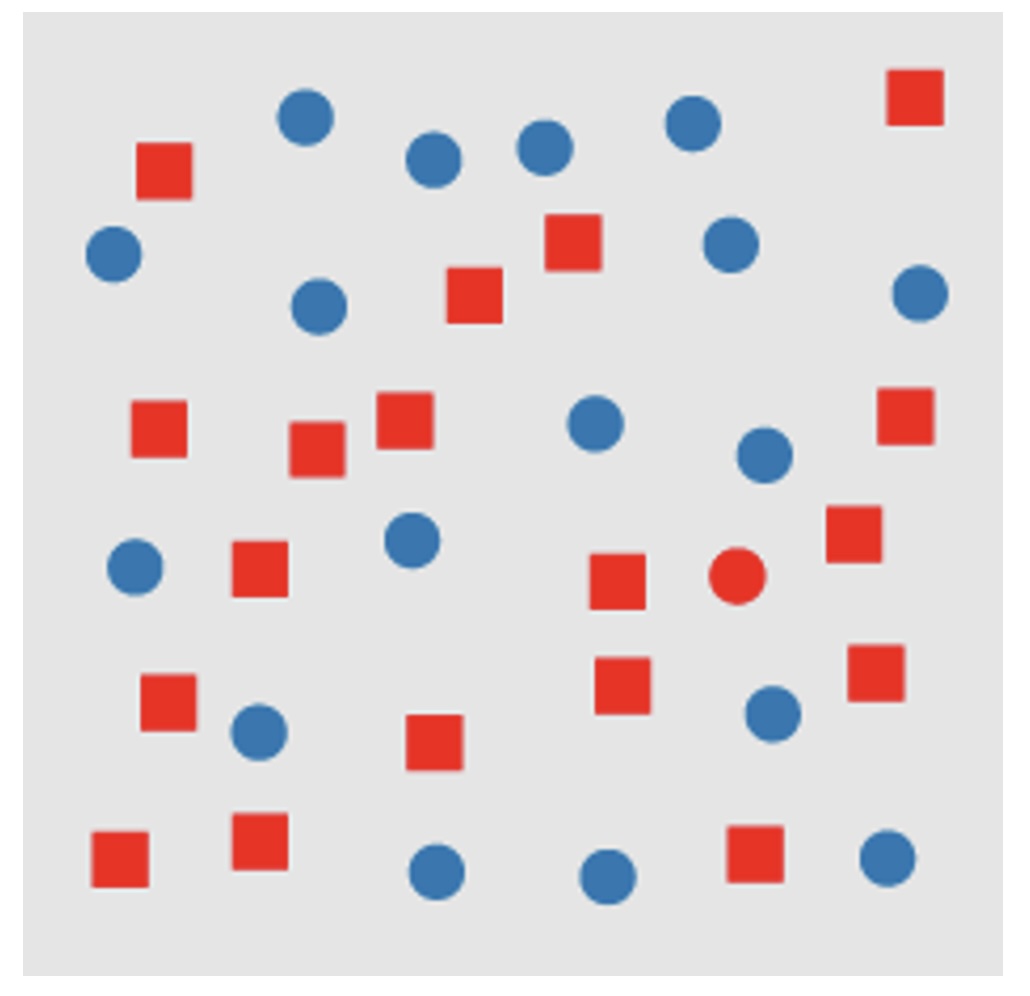 ::: footer Slides based on material from Prof. Enrico Bertini ::: ## Separability * Amount of interference between channels  ::: footer Slides based on material from Prof. Enrico Bertini ::: ## Relative vs Absolute 